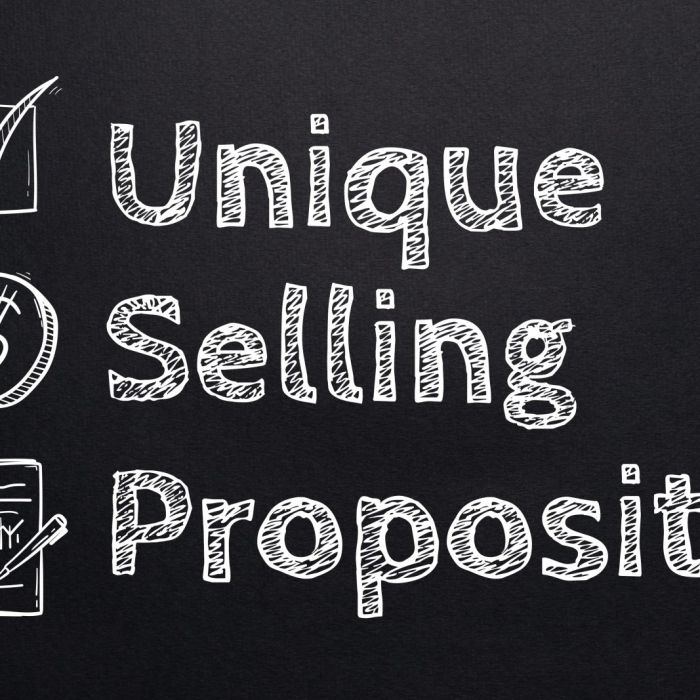If there’s one thing I’ve learned from my time in sales, it’s that a customer’s earning potential doesn’t end after their first purchase. Cross-selling opens up a treasure trove of possibilities for generating additional revenue and enhancing customer satisfaction.
Having spent years in sales and marketing, I’ve contributed to numerous cross-selling campaigns and witnessed firsthand how powerful it can be in boosting business income and nurturing customer relationships.
In this guide, I’ll break down the concept of cross-selling, explain how it works, its benefits, and its challenges, and share a few tried-and-true strategies that can start driving revenue growth right away.
-
What Is Cross-Selling?
Cross-selling is the art of offering customers additional products or services that complement their original purchase. For example, if a customer buys a hamburger at your fast food joint, cross-selling would involve asking if they’d like to add fries and a drink to complete the meal. If they say yes, you’ve just generated more revenue.
Cross-selling opportunities arise at various points in the sales process. Personally, I like to focus on product pages, checkout pages, thank-you pages, and post-purchase emails to present these opportunities.
In a 2024 HubSpot survey of over 1,400 sales professionals across North America, Europe, and Asia, 87% of them said they actively cross-sell during the sales process.
To kickstart a cross-selling strategy, start by identifying products that fulfill needs not addressed by the initial purchase—or that enhance the value or functionality of the original item. Then, encourage the customer to purchase these additional items.
Cross-Selling vs. Upselling: What’s the Difference?
Though often used interchangeably, cross-selling and upselling are distinct strategies.
- Cross-selling involves offering customers additional, related products.
- Upselling, on the other hand, is about convincing the customer to buy a more expensive or upgraded version of the product they’re already considering.
For instance, if a customer orders a burger, cross-selling might mean suggesting fries and a drink. Upselling would involve offering a premium burger with extra toppings.
Here’s how the two compare in real-life scenarios:
-
Mobile Phone Store
Cross-selling: Suggesting a phone case, screen protector, and charger with a smartphone purchase.
Upselling: Offering a more advanced phone model with a larger screen and better camera. -
Web Hosting Service
Cross-selling: Proposing domain registration or SSL certificates alongside a hosting plan.
Upselling: Encouraging a higher-tier hosting plan with more storage and bandwidth. -
CRM Software
Cross-selling: Suggesting a subscription to a CRM tool after purchasing a marketing newsletter plan.
Upselling: Proposing a more robust CRM subscription with additional features and seats.
Benefits of Cross-Selling
Here’s why cross-selling has been a game-changer for me:
-
Increased Revenue
Cross-selling directly boosts sales revenue. McKinsey reports that cross-selling can increase sales by 20% and profits by 30%. HubSpot’s research shows that cross-selling contributes to 21% of businesses’ total revenue.Why is this? The likelihood of closing a sale with an existing customer is between 60-70%, compared to just 5-20% with a new customer. By getting your current customers to spend more, you can reduce the constant need for acquiring new clients, which can cost 5 to 25 times more than retaining existing ones.
-
Higher Customer Lifetime Value (CLV)
Cross-selling can significantly increase the long-term value of each customer. When customers feel that your business consistently meets their needs, they’re more likely to stay loyal and make repeat purchases, driving up their CLV. -
Improved Customer Satisfaction
A well-executed cross-sell can enhance the overall customer experience. If a customer buys a camera, for example, offering a tripod or a camera bag can improve their experience and satisfaction. Customers feel understood when you offer products that genuinely add value to their original purchase. -
More Product Visibility
Cross-selling introduces customers to more of your product range. By strategically placing related products in front of customers during their buying journey, you increase the chance of impulse purchases and discover new customer interests.
Drawbacks of Cross-Selling
Like any strategy, cross-selling comes with its challenges:
-
Annoying Customers
There’s a fine line between making helpful suggestions and coming across as pushy. If customers feel you’re just trying to sell them more, they might tune out or even get frustrated.To avoid this, I focus on customer engagement levels. If a customer shows reluctance, I back off and respect their decision. No one likes to feel like they’re constantly being sold to.
-
Catering to Problematic Customers
Cross-selling to “problem customers” (those who frequently return products, overuse customer support, or avoid valued items) can actually hurt your business. A Harvard study found that cross-selling to these types of customers can cost more than the revenue it generates.To mitigate this, I closely monitor customer behavior and adjust my approach, perhaps focusing on upselling or engaging with other customers who are more likely to benefit.
Preparing to Cross-Sell
Effective cross-selling starts with preparation. Here’s how I approach it:
-
Get to Know Your Audience
It’s crucial to understand your customers after they’ve made a purchase. Their needs evolve, and keeping tabs on their changing preferences helps you know what they may need next. I recommend creating updated customer personas based on demographic info, feedback, and purchasing habits. -
Map Out the Customer Journey
Understanding the customer’s path from first contact to post-purchase can help you identify key moments to introduce cross-sells. Typically, customers are most receptive to cross-selling after they’ve seen positive results from their purchase. -
Know Your Products Inside and Out
A successful cross-sell depends on your understanding of how your products complement each other. Be sure you know how to pair products in a way that genuinely adds value, not just ups the sales numbers. -
Hone Your Listening and Analytical Skills
Cross-sell opportunities can arise in unexpected moments. Whether in a call or email exchange, paying attention to the customer’s tone and comments (or even what they don’t say) helps you identify areas where your products can help them further. - Effective Cross-Selling Strategies
Now that you’re prepared, here are a few cross-selling strategies that have worked wonders for me:
-
Personalize Your Offers
A study by Forbes shows that 81% of customers expect personalized experiences. Tailor your cross-sell recommendations based on customer behavior, preferences, and past purchases. This makes customers feel valued and increases the likelihood they’ll take action. -
Automated Product Recommendations
Personalized, automated cross-selling offers are incredibly effective. According to Lisa Richards, CEO of Candida Diet, sending personalized product recommendations increases the likelihood of a customer adding additional items to their cart by 37%. These customers also tend to return more often, increasing their CLV by 12%.
Cross-selling is more than just a sales tactic—it’s about understanding your customers’ needs and providing real value. With the right approach, it can create lasting customer relationships while boosting your business’s bottom line.
Segment Your Clients
Segmenting your clients is one of the most crucial steps in tailoring your offers. Different marketing strategies work better for different segments of your audience. Ryan Miller, founder and CEO of Etna Interactive, utilizes Sales Center to segment his clients, allowing him to reach them with timely and relevant product suggestions.
Justin Mauldin from Significant PR, another Sales Hub user, highlights the importance of the data and analytics HubSpot offers for segmenting clients:
“We focus on creating tailored campaigns by using CRM data and setting up automated response loops for continuous sales insights, which help us customize relevant offers for specific client segments. Integrating these aspects provides us with a cohesive sales message. Our business traces patterns through HubSpot’s data-driven insights, enabling us to identify high-opportunity areas and refine our cross-sell strategies. This data-driven approach makes our campaigns more dynamic and impactful.”
Offer Discounted Add-ons
HubSpot’s 2024 study reveals that 37% of U.S. sales representatives who cross-sell cite offering discounts and promotions as one of their most effective strategies. Additionally, 82% of online consumers are more likely to complete a purchase if they have a discount code or coupon. Who can resist a discount, right?
While it’s essential to highlight the cost-saving benefits of your promotions, it’s even more important to emphasize how the add-on product enhances the customer’s experience and adds extra value.
Offer Special Packages and Bundles
Another effective cross-selling technique is creating exclusive bundles that combine the primary product with complementary items. Often, the package is cheaper than purchasing the items individually.
One approach I love is offering the bundle as a special deal only available to customers who buy a specific key product. This creates a sense of urgency and additional incentive for customers to take advantage of the offer.
Joel Popoff, CEO of Axwell Wallet, uses Sales Hub’s deal-stage automation to offer bargain bundles before the deal is finalized. He shares, “For example, when a customer adds an aluminum wallet to their cart, we don’t wait until they complete checkout. Instead, HubSpot sends them an email while they’re still browsing, featuring the ‘most popular bundle’ with our RFID-blocking cash clip. It feels like a natural choice, not an afterthought. That small change resulted in a 27% increase in average order value (AOV).”
To leverage this approach, it’s crucial to find the sweet spot in your bundle discount. A study in the Journal of Risk and Financial Management found that if a discount is around 20%, customers still prefer buying individual items. However, if the discount is 45% or higher, bundles are more attractive than individual purchases.
Show Products Often Bought Together
For ecommerce businesses, showing products that customers frequently purchase together with the main item is a great cross-selling strategy.
When I see the “Frequently bought together” section on an Amazon page, I naturally wonder why those items go so well together. If the additional product offers value, I’m likely to add it to my cart too.
Track and Assess Performance
The key to maintaining sharp cross-selling efforts is continuously tracking and analyzing your performance. I personally monitor metrics like conversion rates, average order value, and customer satisfaction using Google Analytics.
Once I have that data, I analyze it to identify patterns and areas for improvement. Then, it’s about brainstorming ways to refine my cross-selling tactics and optimize my offers.
Test Different Strategies
Even when your current strategies are performing well, there’s always room for improvement. Test different offers, messaging, placements, and bundles to see if you can find more effective combinations.
I personally run A/B tests to evaluate the impact of different variations and refine my strategy based on what works best.
Leverage Social Proof
An effective cross-selling strategy I’ve found is using social proof to build trust in your offers. Display ratings, reviews, and testimonials from happy customers who’ve benefited from complementary products.
This boosts the perceived quality and effectiveness of the product, making customers more willing to accept the cross-sell. According to the Medill Spiegel Research Center, showing reviews can increase a customer’s likelihood of purchasing a product by up to 270%.
Empower Your Team
Equip your sales and marketing teams with the knowledge and tools to maximize cross-selling opportunities. This includes providing training sessions that focus on understanding customer needs, product expertise, and effective communication.
Additionally, provide ongoing support and feedback to help your team refine their cross-selling strategies.
When I work with a sales team, I like to give them some flexibility within established guidelines. This allows them to personalize their cross-selling approach, which I’ve found leads to more genuine customer interactions and higher success rates.
Two sales leaders I spoke with use tools in Sales Center to empower their teams for effective cross-selling:
Fineas Tatar, co-CEO of Viva, explains that using the call review feature in Sales Center “makes it easy to listen to recordings with representatives and identify moments when a customer mentions a need that might align with other solutions we offer. We also use tracked terms to automatically find calls where cross-selling opportunities are mentioned and trigger the next steps.” He says the tool helps them catch opportunities that could otherwise slip through the cracks while training reps to be more mindful during calls.
Leon Huang, CEO at RapidDirect, uses HubSpot’s playbooks for his team. He says, “The playbooks help turn our sales conversations into guided explorations of customer needs. We offer technically complex products, and the Sales Hub helps us make sense of them and simplify the process, allowing us to identify more cross-selling opportunities as they arise.” Huang has seen a 15% increase in cross-sells, with approximately 15% more quotes including multiple service lines since implementing the playbooks.
How to Cross-Sell Ethically
Cross-selling is a legitimate strategy, but it’s crucial to approach it with care. Here are some guidelines I follow to stay within ethical boundaries.
Focus on the Customer and Their Needs
When cross-selling, the focus should always be on the customer and their needs. Never cross-sell just for the sake of it—ensure that every recommendation genuinely adds value to the customer’s purchase. Natalie Hogg, President and Head of Marketing at Method Q, says:
“If the cross-sell products/services bring additional value and enhance the customer’s outcome, it’s less about selling and more about solving. The focus should be on what the customer gains, not what the salesperson needs to sell.”
Respect Customers’ Choices
There’s nothing more frustrating than a sales associate trying to sell you something you clearly don’t need. Always respect your customers’ choices when they decline cross-sell offers.
Whenever I’m cross-selling, I watch for verbal and nonverbal signs indicating disinterest or discomfort. If I sense resistance, I shift my focus to providing excellent service and building rapport. This paves the way for future cross-selling opportunities based on trust and mutual respect.
Be Transparent
When offering a cross-sell, be transparent about the value and limitations of the product. Don’t overpromise what the product can do. If there are any drawbacks, be upfront about them and offer workarounds.
As business growth manager Yaz Hanley says, being transparent about the value and costs of additional items “builds trust and fosters a long-term relationship with the customer, which is far more valuable than a one-time sale.”
Maintain Long-Term Engagement
Stay in touch with your clients year-round, not just when you have a cross-selling opportunity. Sienna Quirk, CMO at Invisory, emphasizes the importance of maintaining ongoing communication:
“If your customer only hears from you during renewal season, you’ll come across as shallow and money-driven. If you keep a steady flow of content throughout the year, you won’t seem desperate.”
Boost Your Sales with Cross-Selling
When done right, cross-selling benefits everyone. You increase your brand’s revenue while providing your customers with products that better meet their needs and expectations.
Yes, it requires a strategic and thoughtful approach, but you now have all the knowledge you need to get started. My top advice is: Stay attuned to how your customers feel, identify the features or products that will benefit them the most, and time your offers perfectly.




